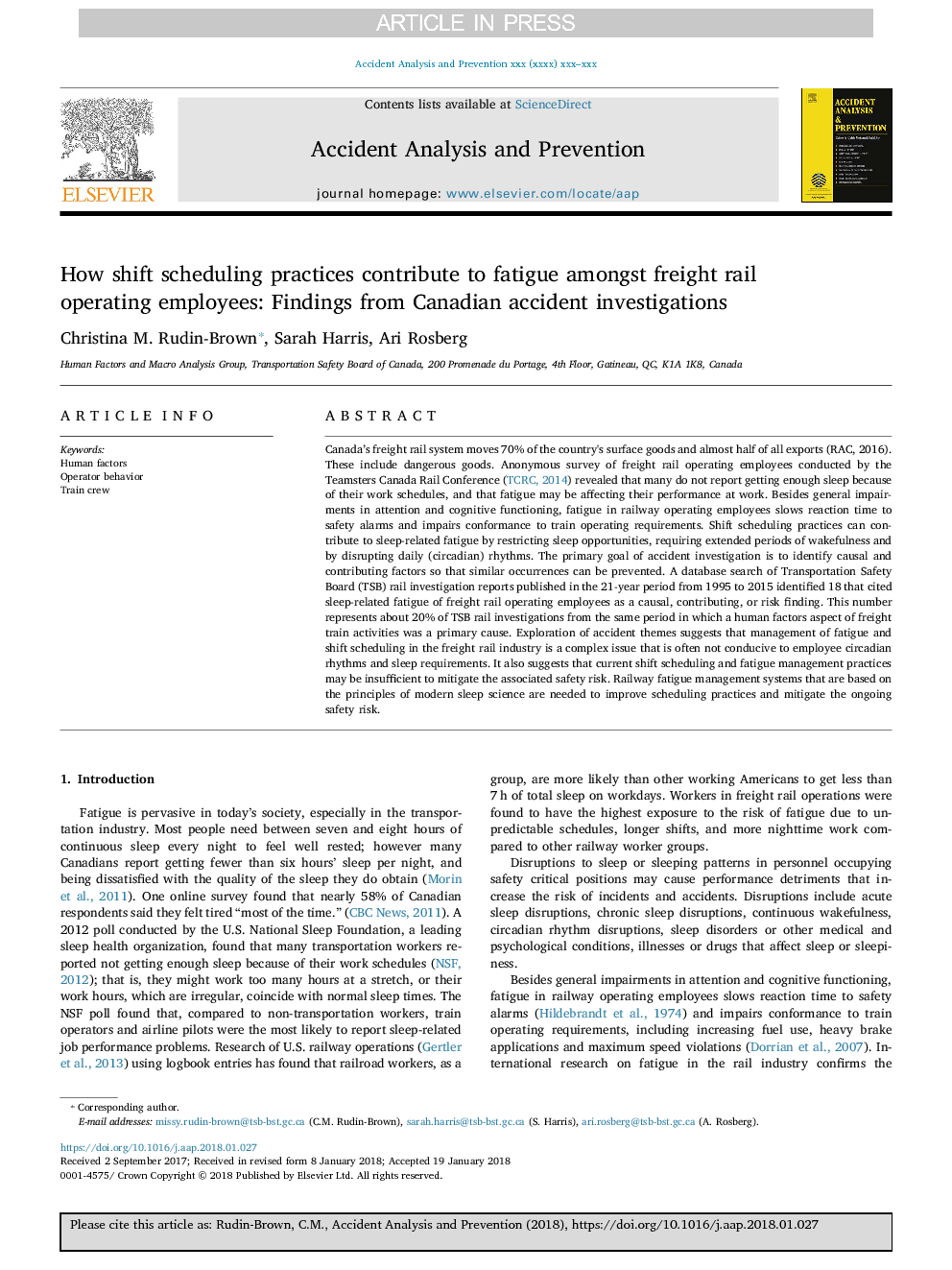ترجمه فارسی عنوان مقاله
چگونه شیوه های برنامه ریزی تغییرات به خستگی در میان کارکنان عامل حمل و نقل ریلی کمک می کند: یافته های تحقیقات حادثه کانادایی
عنوان انگلیسی
How shift scheduling practices contribute to fatigue amongst freight rail operating employees: Findings from Canadian accident investigations
| کد مقاله | سال انتشار | تعداد صفحات مقاله انگلیسی |
|---|---|---|
| 133524 | 2018 | 6 صفحه PDF |
منبع

Publisher : Elsevier - Science Direct (الزویر - ساینس دایرکت)
Journal : Accident Analysis & Prevention, Available online 2 February 2018
ترجمه کلمات کلیدی
عوامل انسانی، رفتار اپراتور، خدمه قطار،
کلمات کلیدی انگلیسی
Human factors; Operator behavior; Train crew;

